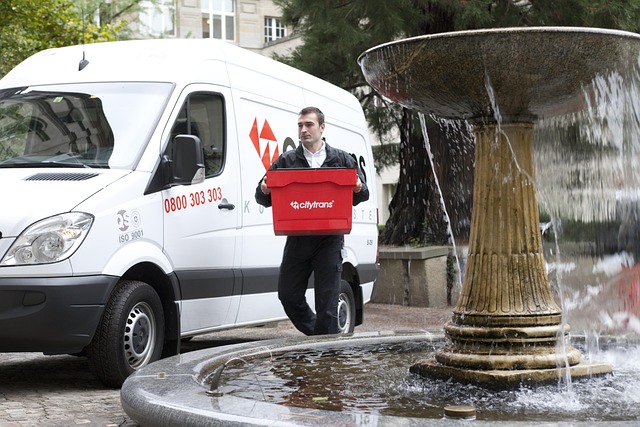Liability insurance is a critical component for businesses introducing new fleets, offering financial protection against claims and damages from accidents or incidents. Adequate coverage involves evaluating policy limits, comprehending exclusions, and customizing policies to meet unique business needs. Comprehensive liability coverage should protect against medical expenses, property damage, legal fees, and related costs. New fleet owners should prioritize obtaining liability coverage as a foundational element in their risk management strategy, leveraging technology for enhanced safety and data-driven risk mitigation.
Navigating liability insurance is crucial for protecting your business and drivers in today’s risky landscape. This comprehensive guide, tailored for new fleet owners, demystifies essential concepts like understanding liability insurance basics, the need for extensive coverage, and key components of effective protection. Learn valuable strategies to minimize risks and maximize your fleet’s safety net, ensuring peace of mind and business continuity. For new fleets, securing robust liability coverage is a game-changer in managing unforeseen challenges.
Understanding Liability Insurance: The Basics Explained

Liability insurance is a crucial component of protecting your business, especially when introducing new fleets into your operations. It provides financial safeguard against potential claims and damages arising from accidents or incidents involving your vehicles. This type of coverage is designed to compensate for legal fees, medical expenses, and other losses incurred by injured parties or damaged property owners.
For businesses with new fleets, understanding liability insurance becomes even more essential. When you purchase a new fleet, it’s important to ensure that your insurance policy offers adequate liability coverage to protect your investment and mitigate risks associated with operational risks and driver negligence. This involves evaluating the limits of liability, understanding exclusions, and customizing your policy to align with your specific business needs, including any unique hazards or requirements related to your fleet operations.
Why New Fleet Owners Need Comprehensive Coverage

For new fleet owners, securing comprehensive liability insurance is a critical step in building a robust risk management strategy. This is especially true for businesses entering the trucking or transportation industry, where potential liabilities can quickly become overwhelming. Liability coverage protects against financial loss due to accidents, damages, and legal claims, which are inherent risks associated with owning and operating a fleet of vehicles.
Comprehensive liability insurance offers new fleet owners peace of mind by providing a safety net that can cover the costs of medical expenses, property damage, legal fees, and other related expenses stemming from an incident involving their drivers or vehicles. Without adequate coverage, a single accident could lead to financial ruin, impacting the stability and future growth prospects of the business. Therefore, new fleet owners should prioritize obtaining liability coverage as a foundational element in their business insurance portfolio.
Key Components of Effective Liability Coverage

When considering liability insurance for new fleets, understanding key components is essential for effective protection. Comprehensive liability coverage should include several crucial elements. First and foremost, ensure that your policy offers sufficient limits to cover potential claims. This protects your business from significant financial losses in case of accidents or incidents involving your drivers and vehicles.
Additionally, thorough liability coverage should extend to a wide range of risks, such as property damage, personal injury, and legal fees associated with lawsuits. It’s also beneficial to have policies that include specific endorsements for new fleet acquisitions, ensuring continuous and comprehensive protection as your business grows. This includes coverage for newly added vehicles, drivers, and any operational changes, thereby safeguarding your investments and maintaining smooth business operations.
Strategies for Minimizing Risks and Maximizing Protection

When it comes to protecting your business and drivers, strategies for minimizing risks and maximizing protection are key. For companies introducing new fleets, a comprehensive approach to liability insurance is essential. Start by conducting a thorough risk assessment to identify potential hazards specific to your operations. This could involve evaluating driver behavior, vehicle maintenance practices, and the nature of your industry. By understanding these risks, you can tailor your liability coverage to address them effectively.
Implementing robust safety protocols, providing regular training, and ensuring proper vehicle upkeep are proven methods to reduce accidents and claims. Additionally, leveraging technology like telematics for real-time monitoring and advanced driver assistance systems (ADAS) can significantly enhance safety and offer valuable data for risk management. With these measures in place, new fleets can enjoy enhanced protection while minimizing the potential for costly liabilities.
For new fleet owners, securing comprehensive liability insurance is a strategic move to protect both business interests and drivers. By understanding the basics of liability coverage, recognizing the unique needs of new fleets, and implementing risk-minimization strategies, businesses can ensure they’re prepared for potential liabilities. Investing in effective liability coverage is a proactive step towards navigating the road ahead with confidence and peace of mind.
